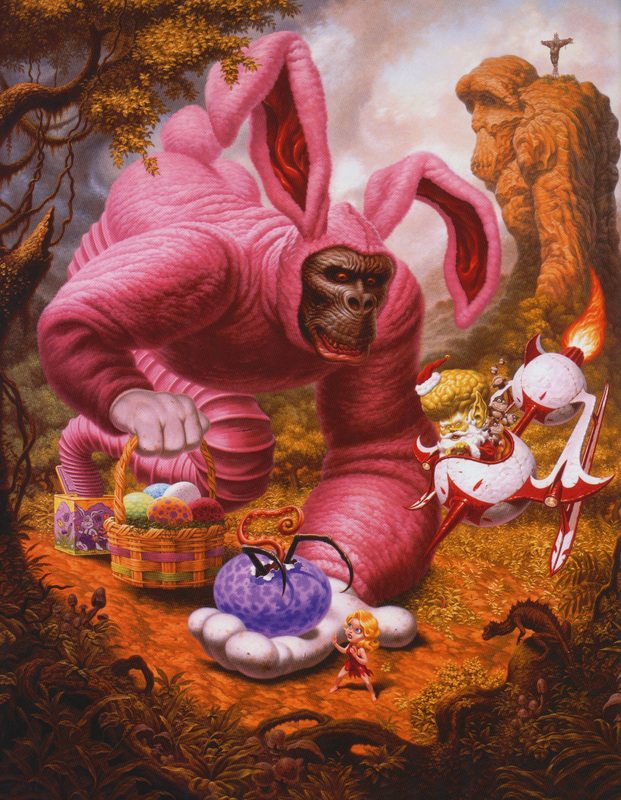
Folklore refers to the collective collection of cultural traditions that are shared among people. This includes legends, tales, proverbs, and jokes. It can also refer to mythical creatures. Folklore can be a valuable tool in understanding the culture within which we live.
Myths
Myths are stories based on the supernatural world. They tell stories about the supernatural world, deities and animals. They also tell stories of the lives and activities deities, including their love affairs, families and triumphs and defeats. They might also relate to ritual, ceremonial paraphernalia and tabus (or other sacred objects). It doesn't matter what origin myths have, they are often important in the formation traditions.

Legends
Legends in folklore can be described as stories told by people from diverse cultures. Originally, they were meant to be oral stories for illiterate people, and often contained religious, historical, and moral principles. The Old Russian word for "legend" comes from the verb to transmit. Legends were first distinguished by their interpretation of events according religious norms.
Mythical creatures
Folklore has many mythical creatures which represent various qualities that are helpful in daily life. They can make us feel in tune with our emotions and be a sign that we should change something in our lives. They can encourage us to be more imaginative and open-minded, for example. They can also be symbols of power and wisdom.
Storytelling
Folklore can be described as storytelling that occurs in a community. Folklore often refers to events or experiences that we all share. These stories are often told in the character's perspective. Folk tales may describe natural disasters (e.g floods) or the origin of an object or place. Others are based in superstitious beliefs.
Festivals
Festivals play an important role in many societies' cultural life and can be described by their specific characteristics. Festivals can be religious, secular, political, social, or humorous. They may be a remnant of an earlier time in some cases. Others celebrate new beginnings.

Purpose
Folklore is often used to strengthen community cohesion. Folklore transmission has always been inter-personal. This results in an experience shared by both the teller (and audience).
FAQ
Why is pop music so popular
Pop music is loved because it is enjoyable! Pop music is uplifting and can give you a great feeling of freedom. People listen to pop music, and they are free to think about other things than themselves. They don't have worry about what people think. And this is why pop music is so popular. People love to listen to songs that are positive and upbeat. When you feel low, turn on the radio for some upbeat tunes. You may even find yourself singing along. Pop music has been immensely successful over the years.
Are Tik Toks pop culture?
The answer is yes It's not limited to teenagers. These short videos can be shared with friends and family to share their emotions, thoughts, and life moments.
It is used by over 200 million people every day around the globe. And this number grows by millions each day.
This makes TikTok an incredible opportunity for brands to connect with consumers and build meaningful relationships.
TikTok is also home for many influencers who have built huge followings. These creators produce original content that engages people around the world.
What are you waiting to do? Here are four methods to capitalize on this trend.
-
Create Viral Content
-
Engage Influencers
-
Use Visuals Effectively
-
Be Creative With Your Audience
What is pop culture of today?
Pop Culture is a 21st-century art form. It encompasses all forms of popular entertainment, from music, film, TV, video games, fashion, advertising, comics, etc. Neil Postman, an author, coined the term "pop" in his 1985 book Amusing Ourselves. Pop is a type of mass communication that relies on cheap tricks or formulaic devices to give the illusion of spontaneity.
However, he noted that most people do not experience true enjoyment because they have become conditioned to seek media experiences that make them feel superior to others. He also suggested that this form of cultural expression had led to the loss in critical thinking skills among young adults.
Pop culture is also known as consumerism or popular culture.
What are some examples of pop culture in 2020?
The music industry is evolving rapidly. We saw artists like Travis Scott and Post Malone reach number 1 on Billboard’s Hot 100 chart. This was an incredible feat for any artist.
The same holds true for streaming services. Spotify reported streaming over 10 million hours of audio last year. This is five times more than what Spotify users listened to just five years back!
This has resulted in a major shift in the way people consume media. Nowadays, most people are more interested in consuming content than creating.
Today everyone from toddlers to retirees has access to a device capable of playing back high-quality audio content. This allows anyone to record, edit and mix their music.
To be able to sing your favorite song, you don't need to attend university to study classical instrumentation. Download an app, add your voice, then upload them to YouTube.
You don't have to be a musician, but you can watch others make it. There are many channels where you can watch videos of songs.
How did pop culture develop?
Technology was the driving force behind popular culture's development. It developed with the rise of mobile technology. Mass communication was made possible by the invention of radio. This was the beginning of television, which eventually led to the birth of the internet.
People started using computers at home and were exposed to computer games. These games were played on consoles, such as the Nintendo Wii and Sony Playstation3. They are now becoming available for free online. Many young people now prefer video games to watching television.
Video games are very common among children and teens. These games can be played solo or with friends over the internet. Call Of Duty and Grand Theft Auto games are very violent. These games can cause serious harm to children, so parents should be concerned about their children. Others find it thrilling to watch what happens when one of their characters dies.
Music videos are another way that pop culture influences youth. They give information about current trends and celebrities. They are loved by young people. It is clear that music plays a significant role in our lives.
Special effects are used to enhance songs in music videos. For example, rappers wear wigs and makeup to look more attractive. Other musicians put themselves through extreme physical challenges to show off their bodies. Many singers perform while wearing costumes.
Today, there's so much choice in music. You can listen any music you wish. It's not always good news. Music can sometimes encourage violence. People become angry when they hear certain lyrics and words. Sometimes, they even commit criminal acts.
50 Cent was a victim of this phenomenon recently. The line from his song Get Rich Or Die Trying is "I'm going down a motherfucker / I don’t know why, but I might." Someone heard this song and thought it meant that he was going to kill someone. He was threatened by a man who called him. 50 Cent then changed the lyrics. It now reads: "I'll shoot an inchch down/ I'm not sure why, but I may."
Popular culture is essential. It's important that we understand how it affects and impacts us. If we don't, we won't be able to protect ourselves against its adverse effects.
What are some of the positive aspects of pop music?
Pop culture doesn't have to be bad. Pop culture is a great source of entertainment. Pop culture allows people to express themselves creatively. Pop culture can be used as a platform for artists to promote and market their work.
Pop culture brings people together. Everyone wants to see the same shows. Everyone has a favorite song. People like the same movies. Pop culture makes it easy to connect.
Problem is, not all pop culture has the same health benefits. There are films that glorify violence. Some programs on television make fun of those with mental disabilities. Some bands even encourage their fans to use drugs.
What can we do about pop culture's negative aspects?
We should try to avoid the negative parts of pop culture. We should not allow it to influence our lives. It can lead to problems in our health. It can lead you to crime. It can also affect our relationships.
Pop culture can also be a source of help or harm to society. Are they promoting positive values? Are people being influenced into doing bad things?
We should also ask ourselves if the world in which we live is a happy one. Are we satisfied with the music we listen? What TV shows do you watch? What clothes do you wear?
We must be responsible for our actions if we are to care about the future. We need to decide what kind of world we want to live in. We can then choose the right pop culture.
How can I incorporate pop culture into my marketing strategy?
It is important to study the trends to see how pop culture can be used in marketing strategies.
Let's suppose you wanted to promote the release of a new film. What kind of promotion would you be able to run?
You could make a trailer using clips taken from the movie. A clip could be found that features your product or service and included in the video.
You could also make a parody trailer by using famous films.
You could use the movie's plotline to create a promotional campaign for a product or service you were trying to promote. One example: If you are promoting a product or service that helps astronauts keep healthy while they travel through space, it might make sense to promote the product.
You could do promotions based upon the plotline of a business related to the movie's subject. Customers who buy tickets for the movie could get free food samples from your company if you sell food.
Statistics
- [17][18][19]Definition[edit]According to author John Storey, there are various definitions of popular culture. (en.wikipedia.org)
- Recently, the market share across Western Europe has ranged from 60-75% (Hopewell, 2013). (socialsci.libretexts.org)
- According to Dictionary.com, popular culture, or low culture as it is sometimes referred to is comprised of the “cultural activities or commercial products reflecting, suited to, or aimed at the tastes of the general masses of people” (7/21/19). (socialsci.libretexts.org)
- Yet a Nielsen study shows they account for 42% of the country's most-watched content on streaming services. courtesy Nielsen (npr.org)
- Latinos represent roughly 19% of the U.S. population. (npr.org)
External Links
How To
What is pop culture in films?
Popular Movies Culture involves all aspects of entertainment - including books, magazines, newspapers, television programs, websites, blogs, social media, apps, games, and more.
There are several categories for movies: comedy, horror, action/adventure. fantasy, science fiction. romance. thriller. animation.
Movie plots usually follow a predictable sequence of events that leads to a satisfying ending.
Films' success is dependent on how closely they follow this formula.
Here are some common plot points:
-
A protagonist who has to overcome obstacles in order achieve his/her goal.
-
An antagonist who opposes the protagonist throughout the film;
-
A moral dilemma that requires the protagonist to make a decision;
-
A twist ending that changes everything.
You may have to reevaluate the outline or concept of your story if it doesn't fit within one of these categories before you start writing.
The following questions will be of particular importance:
-
How do I establish my setting?
-
What do you think my protagonist wants?
-
Why should readers care about my story?
-
Where is my life going?
-
Who is my main character
-
Will there be any conflict?
-
What is the climax
-
What is my resolution
-
Are you happy with the ending?
-
Do I have to introduce new characters
-
Can my story be set up in more than one setting?
-
Is there a subplot?
-
Are there major themes?
-
Is it possible to tell a complete story in just one chapter.
-
Can I use dialogue effectively?
-
Is my language clear?
-
Is my vocabulary appropriate for this context?
-
Have I used active voice instead of passive voice?
-
Are there any spelling errors?
-
Is my grammar correct?
-
Are there too many adjectives?
-
Is there something I could do better?
-
After I finish editing, what's my first impression?
Your job is to not only create a book that's good, but to also get it published.